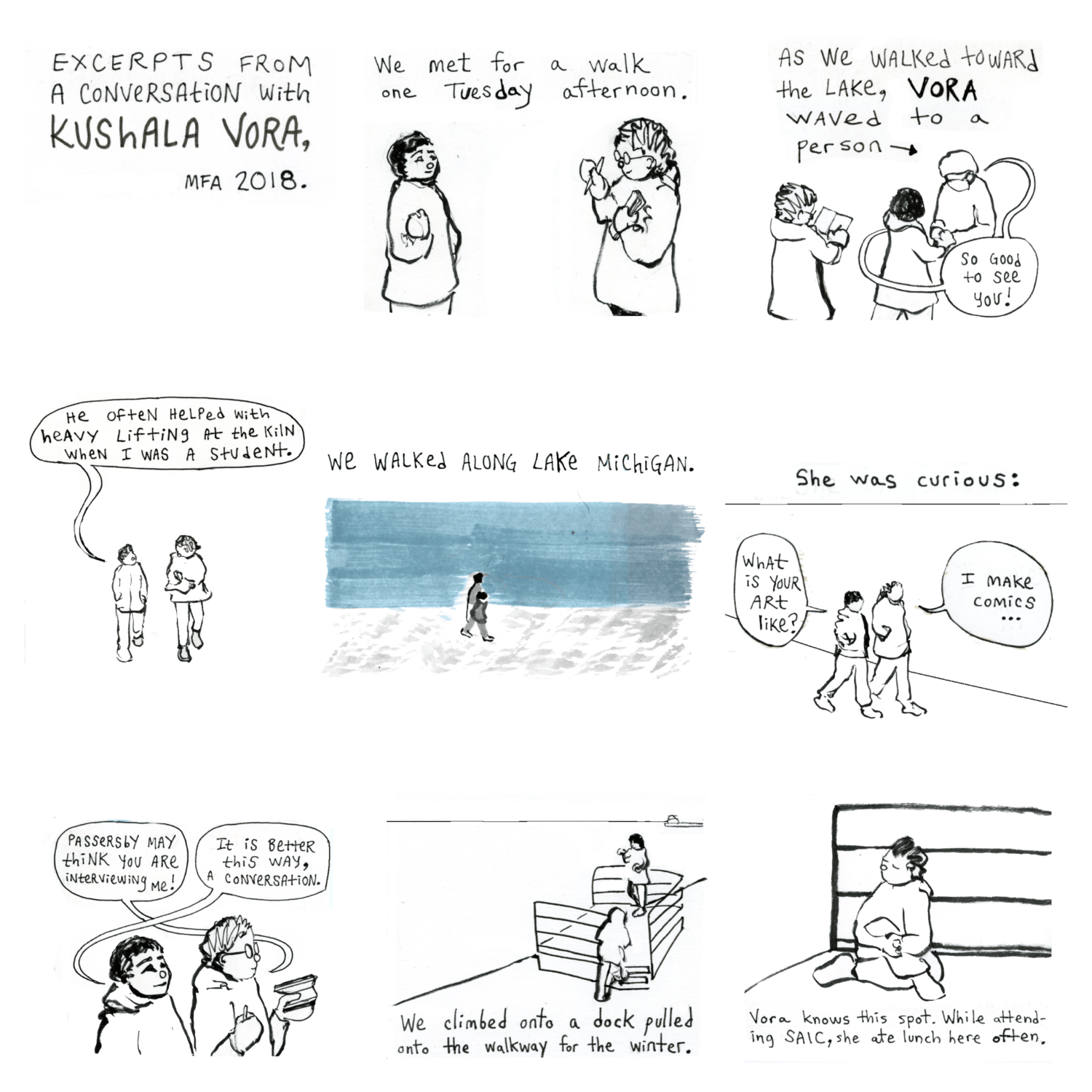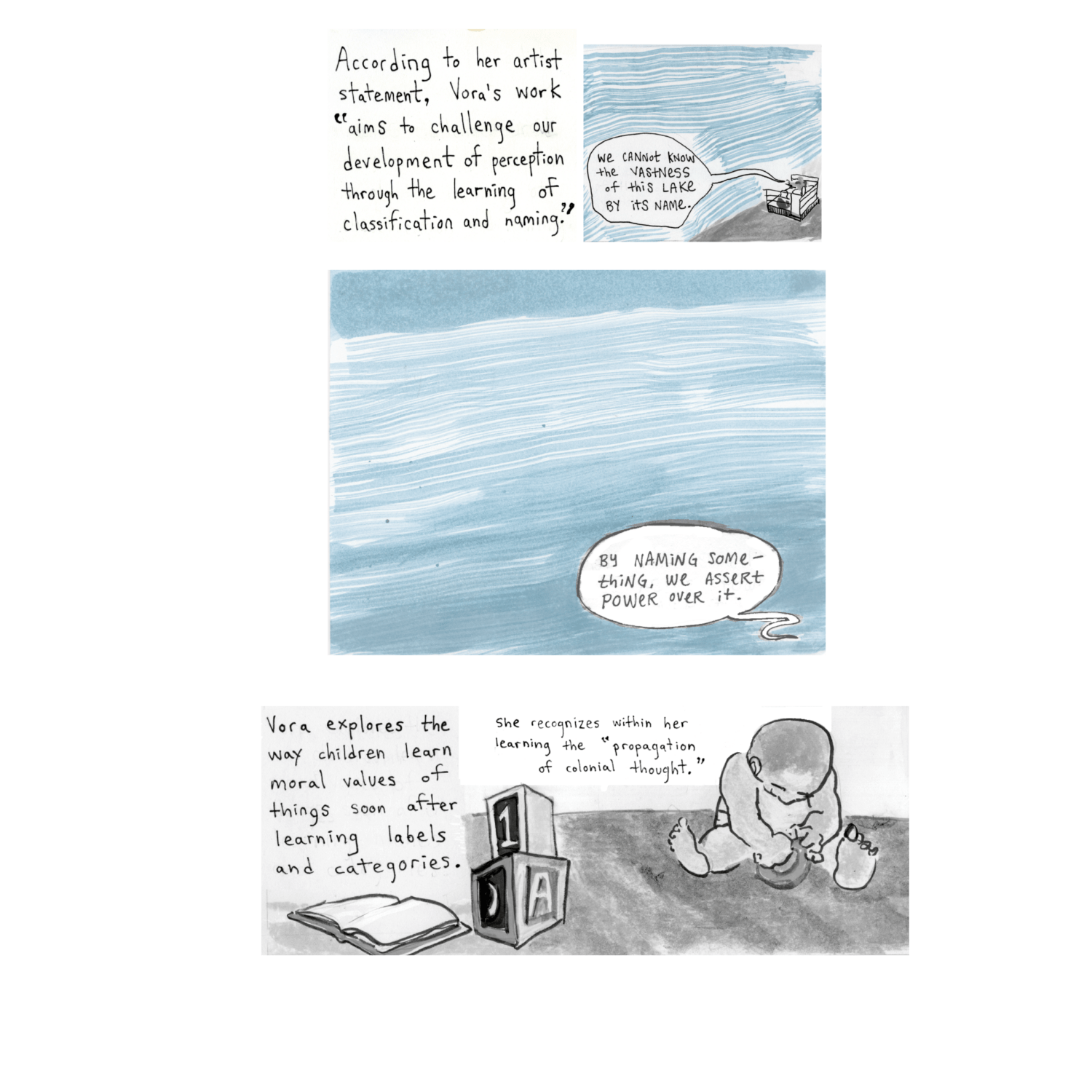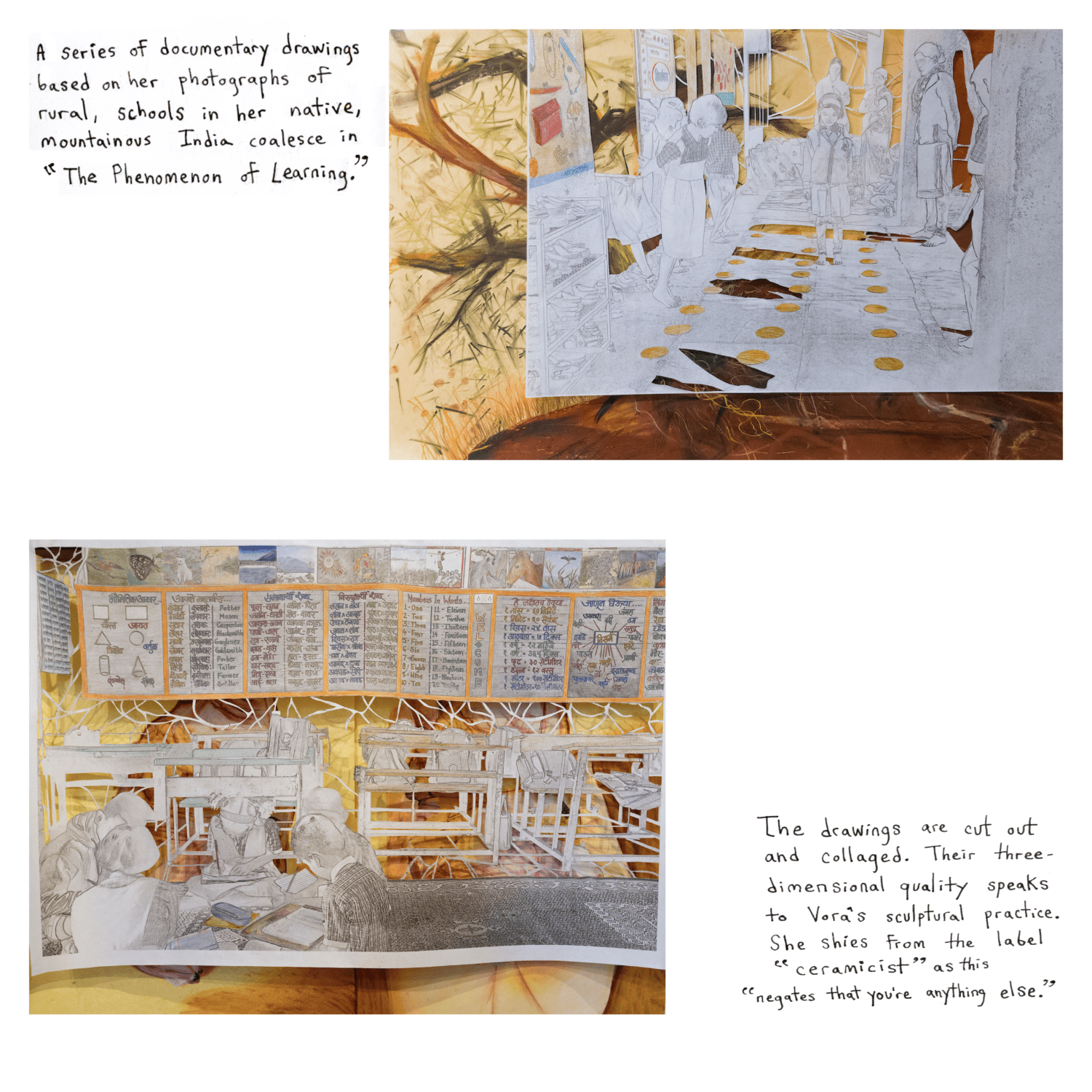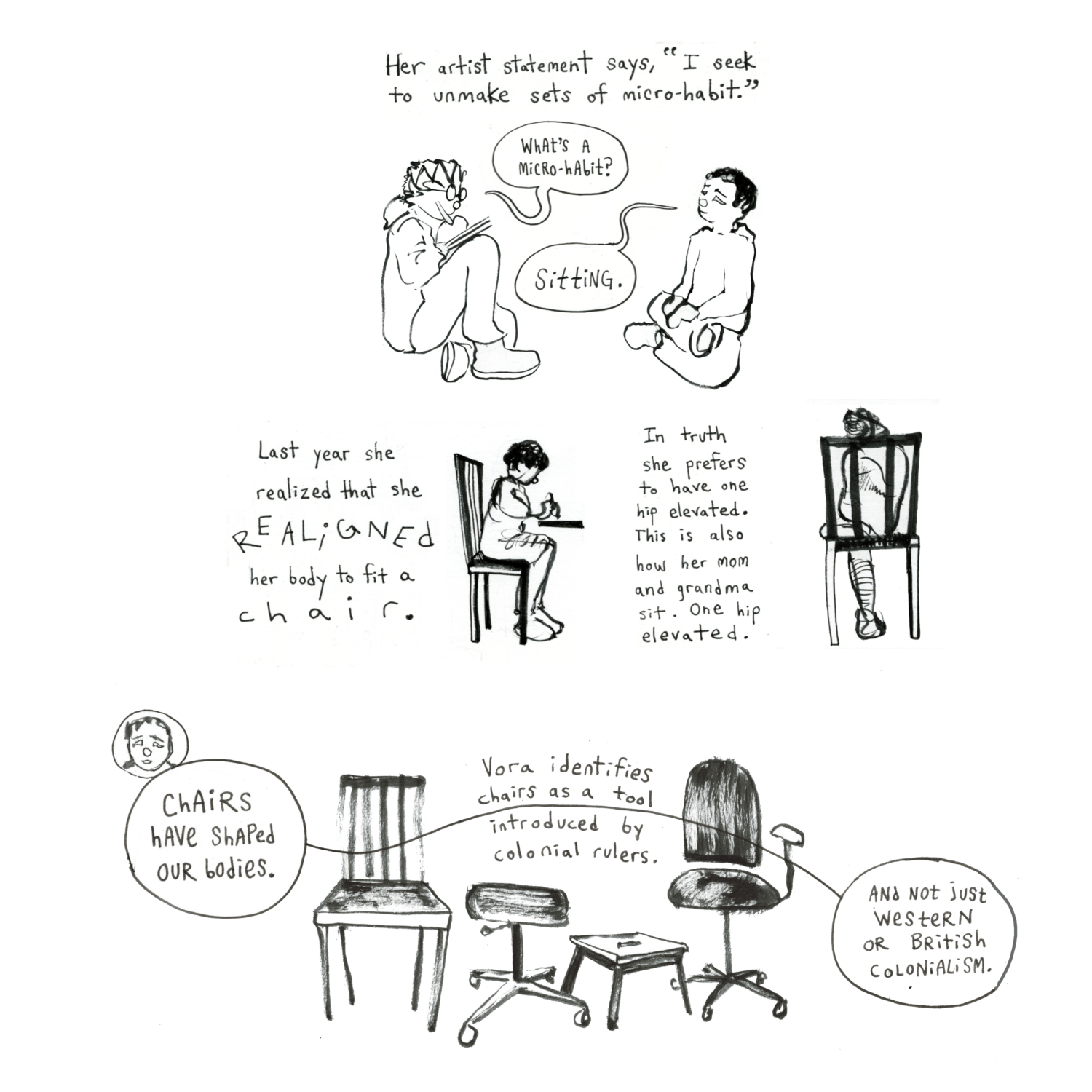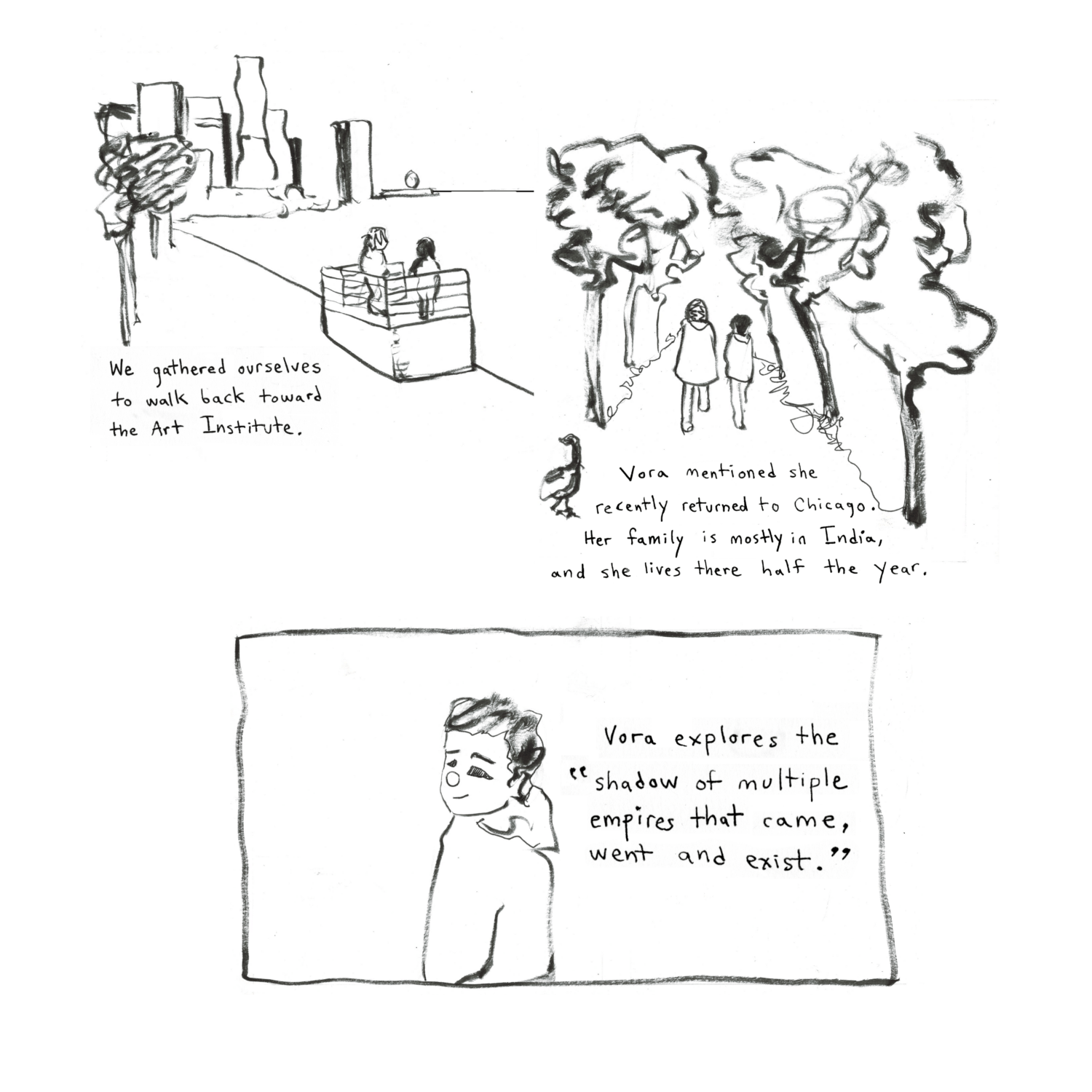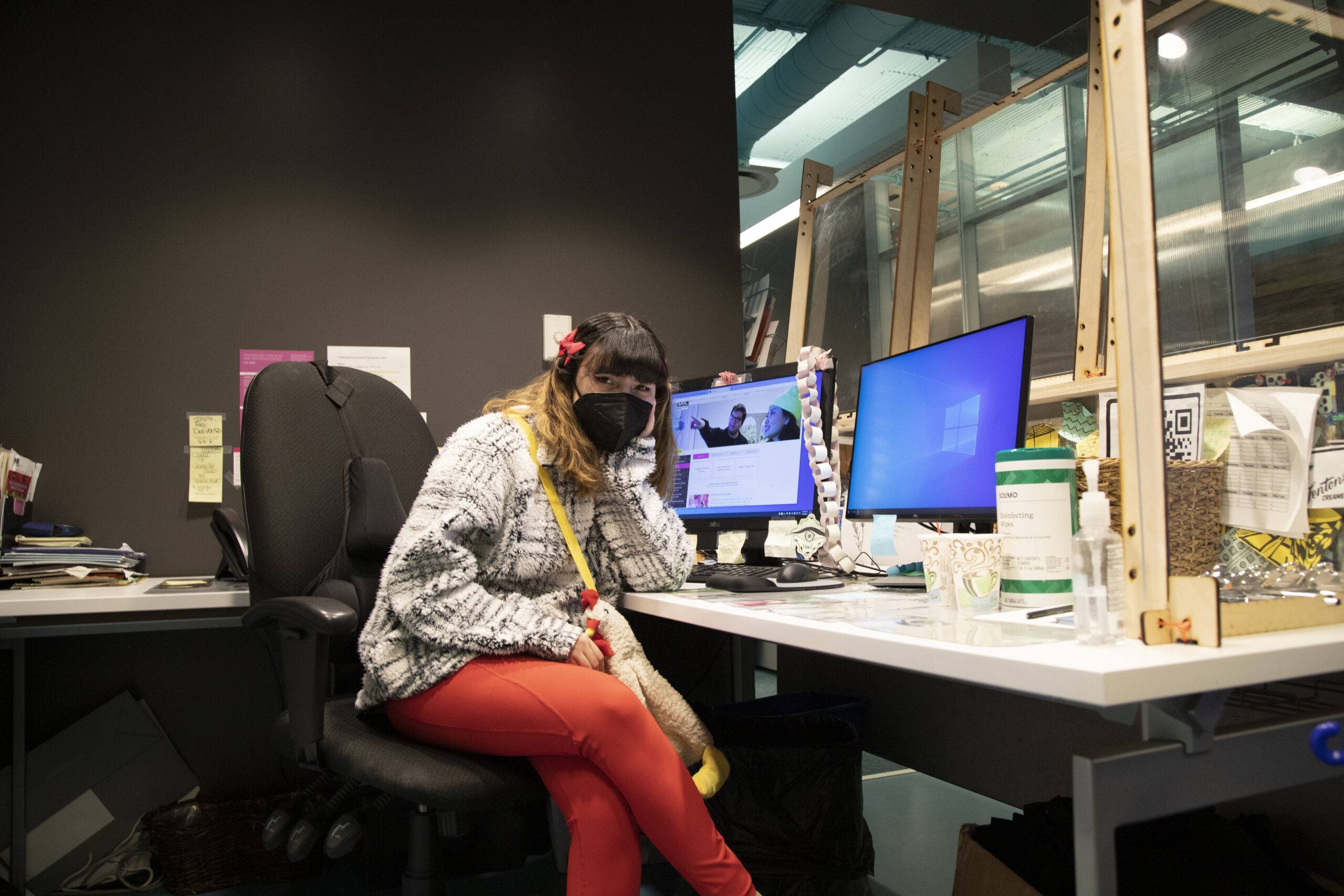Michaela Chan (MFAW 2023) makes comics and chili. Find more of her work at www.michaelachan.com.
TRANSCRIPT
Excerpts from a conversation with Kushala Vora (MFA 2018). We met for a walk one Tuesday afternoon. As we walked toward the lake, Vora waved to a person. They greeted each other, saying, “So good to see you!”
As we continued walking, Vora explained, “He often helped with heavy lifting at the kiln when I was a student.”
We walked along Lake Michigan. She was curious, “What is your art like?”
I replied, “I make comics…Passersby may think you are interviewing me!”
She said, “It is better this way, a conversation.”
We climbed onto a dock pulled onto the walkway for the winter. Vora knows this spot. While attending SAIC, she ate lunch here often.
According to her artist statement, Vora’s work “aims to challenge out development of perception through the learning of classification and naming.”
She gestured at the lake and said, “We cannot know the vastness of this lake by its name. By naming something, we assert power over it.”
Vora explores the way children learn moral values of things soon after learning labels and categories. She recognizes within her learning the “propagation of colonial thought.”
A series of documentary drawings based on her photographs of rural school in her native, mountainous India coalesce in “The Phenomenon of Learning.”
The drawings are cut out and collaged. Their three-dimensional quality speaks to Vora’s sculptural practice. She shies from the label “ceramicist” as this “negates that you’re anything else.”
Her artist statement says, “I seek to unmake sets of micro-habit.”
We are sitting on the dock. I ask, “What’s a micro-habit?”
She replies, “Sitting.”
Last year she realized that she realigned her body to fit a chair. In truth she prefers to have one hip elevated. This is also how her mom and grandma sit. One hip elevated.
“Chairs have shaped our bodies,” Vora said.
Vora identifies chairs as a tool introduced by colonial rulers. “And not just Western or British colonialism.”
Vora is currently showing sculptural work at the National Indo-American Museum, through mid-May. “Bodies made by habits, tools by hand” plays with homonyms of the phrase, “I see.”
Vora’s handwriting in my field notebook draws the various pictograms and phrases of “I see,” including “Eye C, “Aye Sea,” a character of another language for “mother,” drawings of eyes and waves.
We gathered ourselves to walk back toward the Art Institute. As we walk in a stand of trees, Vora mentioned she recently retuned to Chicago. Her family is mostly in India, and she lives there half the year.
Vora explores the “shadow of multiple empires that came, went and exist.”



